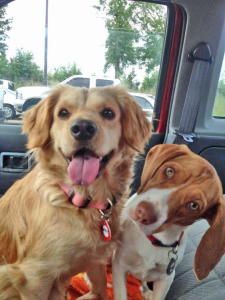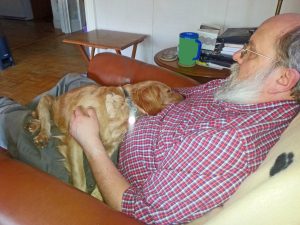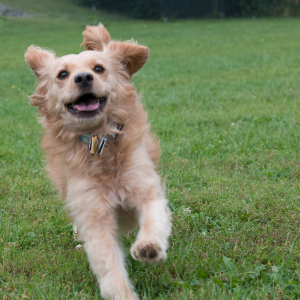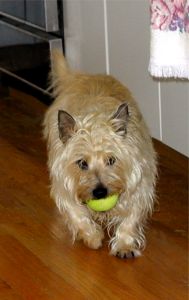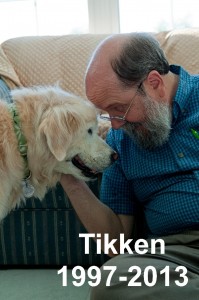<Updated 11JUN17>
< Part 1 of this article was published in the July 2016 issue of Downeast Dog News, and Part 2 was published in the August 2016 issue of Downeast Dog News, and Part 3 was published in the September 2016 issue of Downeast Dog News>
Dog Bite Fatalities & Dog Bites – Part 1
On Saturday, June 4th, deputies from the Penobscot County Sheriff’s Office responded to the report of a dog attack at a home in Corinna, ME. A seven-year-old boy died as a result of the attack.
 As of a Certified Dog Behavior Consultant, the media often contacts me to comment on incidents where a serious dog bite occurs, and this one was no different. The following week I was interviewed on two radio stations and by reporters from the three major TV networks in Maine. Typical questions in this type of interview are; why do dogs bite or kill, is it because of the dogs breed, and how could this have been prevented? Unfortunately, because of the way the news works, I felt my comments were far too brief for a topic of this complexity. Without adequate information, I do not see the dog bite situation changing, so I arranged to interview a national expert on dog bites on The Woof Meow Show and to also to discuss this issue here in a series of articles.
As of a Certified Dog Behavior Consultant, the media often contacts me to comment on incidents where a serious dog bite occurs, and this one was no different. The following week I was interviewed on two radio stations and by reporters from the three major TV networks in Maine. Typical questions in this type of interview are; why do dogs bite or kill, is it because of the dogs breed, and how could this have been prevented? Unfortunately, because of the way the news works, I felt my comments were far too brief for a topic of this complexity. Without adequate information, I do not see the dog bite situation changing, so I arranged to interview a national expert on dog bites on The Woof Meow Show and to also to discuss this issue here in a series of articles.
How “serious” of a problem are dog bite fatalities?
Janis Bradley is a professional dog trainer, author and the Director of Communications & Publications for the National Canine Research Council. Her first book, Dogs Bite, But Balloons and Slippers are More Dangerous was written as a result of an especially horrific dog attack and fatality that occurred in San Francisco in 2001. At the time, Bradley was working at the San Francisco ASPCA, teaching professional dog trainers and working with what would be considered ‘high-risk” dogs, yet she nor none of her colleagues had experienced a serious dog bite. Yet, both the local and the national media were giving extensive airtime to this incident using phrases like “dog bite epidemic.” As a result, Bradley started researching the academic literature on dog bites because she wanted to understand the seriousness of this issue. What she learned was that there was not much reliable research on dog bites. Thankfully, due to Bradley’s efforts, we have a better understanding of dog bites and fatalities today.
Dog bites resulting in fatalities to humans in the US are thankfully very rare. Over the last decade, there were about 30 human deaths per year due to dog bites. That is about one person per 11 million people. While this is an extremely tragic event for all those in some way connected to the victim and the dog, statistics indicate that you are far more likely to be killed by other causes. For example:
- You are1000 times more likely to be killed in a car accident or an accidental fall.
- You are 500 times more likely to be murdered by another human.
- You are 1.5 times more likely to be killed by a lightning strike.
The Center for Disease Control has stopped tracking dog bite related fatalities because they are so rare and cannot make any useful conclusions from the data.
While death by a dog bite is tragic, such deaths are exceeding rare, and it is their rareness and often the horrific nature of the incident that attract a disproportionate amount of media attention. Add to that the response by people on social media, and it is understandable how misinformation is created and circulates.
I want to thank the Penobscot County Sheriff’s office for their responsible release of information for this particular incident.
Next month I will address non-fatal dog bites and what we think we know and what we really know.
Dog Bite Fatalities & Dog Bites – Part 2
Last month I started a series on Dog Bite Fatalities and Dog Bites due to the death of a seven-year-old boy on Saturday, June 4th. My July column dealt specifically with fatalities from dog bites and the fact that while they are tragic, they are also quite rare. You are 1000 times more likely to be killed in a car accident or an accidental fall than to die as the result of a dog bite.
There are some common factors in dog bite fatalities. A study published in The Journal of the American Veterinary Medical Association (JAVMA) in December of 2013 identified several controllable factors that played a part in dog bite fatalities. Four or more of these factors were present in at least 80.5% of the dog bite fatalities examined.
No able-bodied person was present to intervene to attempt to stop the attack. In 87.1% of the cases reviewed, it is quite possible that an attack could have been prevented or interrupted if another person were present. This is why all interactions between a child and a dog should ALWAYS be closely monitored and supervised by a responsible adult. The same applies to an adult who may not have the physical or mental capacity to interact with the dog.
The victim had no relationship with the dog. In 85.2% of the incidents, the victim did not have an established relationship with the dog for at least ninety days. They were not necessarily a total stranger, but they were not part of the immediate household or one who interacted in a positive manner with the dog on a regular basis.
The dog had not been spayed or neutered in 84.4% of the incidents. The decision to spay or neuter a dog has many variables, and it is not as clear cut as it was a few years ago. In some cases, people delay a spay/neuter due to medical reasons or the cost. However, the benefits of spaying and neutering from an animal welfare and a behavioral perspective are also well established. An individual who does not choose to spay/neuter should consider that their decision may increase their dog’s probability of biting.
The victim was physically unable to manage their interaction with the dog or defend themselves due to their age or physical condition (77.4%). – For purposes of the study, “Victims were deemed unable to interact appropriately with the dog if they were < 5 years of age or they had limited mental or physical capacity that increased their vulnerability (e.g., dementia, alcohol intoxication, impairment from drugs, or uncontrolled seizure disorders). As noted above, dogs must be supervised when they are left around those who may not be able to control the dog.
The dog was not a family pet, but lived on the property, often kept outside and often kept in isolation from people, resulting in little or no regular opportunities for positive interactions with people (76.2%). It does not surprise me that dogs that are considered to be part of the family, and thus have a closer bond with people are less likely to bite as opposed to a dog that is mostly consigned to an outdoor kennel or being tied-out on a rope or chain. The study described the latter as “residential dogs.” Those that keep a residential dog as opposed to a family dog, should make sure that said the residential dog is contained to limit any possibility of interactions that could result in a bite.
There was a documented history of inadequate management of the dog (37.5%). In this case, there was evidence that the owner of the dog had allowed the dog to be a danger to others in the past as indicated by previous bite incidents or allowing the dog to run at large.
The owner abused or neglected the dog (21.6%). Neglect by an owner included the dog not being given access to shelter, food, or water or having an untreated medical condition. Abuse constituted cases where the dog was used for fighting or where there was clear evidence of deliberate physical punishment or deprivation.
So what about the breed of dog? This same study reported that the breed of the dog which had killed could NOT be reliably identified in more than 80% of the cases. Sadly, when a dog bite fatality is reported, often the first question from the public and media is “What breed was the dog?” Far too often the dogs breed then becomes the focus of local authorities who then propose new laws centered on breed (Breed Specific Legislation [BSL]) when the dogs breed is not relevant. This paper discusses other studies that have demonstrated that breed-specific legislation has not been effective at reducing dog bites or dog bite fatalities. That is why “…major professional bodies (e.g., veterinary associations in the United States and Europe, the American Bar Association, the National Animal Control Association, and major humane organizations have not recommended single-factor solutions such as BSL.”
Clearly, reducing dog bites is the responsibility of all of us. Next month I will address some of the things that I believe we could all do that would help do just that.
1 Gary J. Patronek, Jeffrey J. Sacks, Karen M. Delise, Donald V. Cleary, and Amy R. Marder. Co-occurrence of potentially preventable factors in 256 dog bite–related fatalities in the United States (2000–2009). Journal of the American Veterinary Medical Association, December 15, 2013, Vol. 243, No. 12 , Pages 1726-1736. (doi: 10.2460/javma.243.12.1726)
Part 3
Even though statistically, dog bites are not a serious societal problem, a dog bite, no matter how superficial, is a traumatic event for the person bitten, the dog and the dog’s owner. We need to do everything we can to prevent dog bites and it is going to take all of us if we want to be successful. We also need to understand how dog bites are classified by canine professionals, the legal system, and insurance companies. You can learn more about canine bite levels by downloading this poster from Dr. Sophia Yin <Click Here>
Here are my thoughts on what we can do to decrease the incidents of dog bites. First of all, we need to accept some basic facts.
- All dogs, irrespective of breed or how good they have always behaved in the past have the potential to bite.
- Misinformed beliefs about canine behavior and the continued use of aversive training tools and philosophies (choke, prong, and shock collars and the dominance construct) are a major reason for behavior problems such as aggression and dog bites which often result in a dog’s death.1
- Most dogs give ample warning before biting, and if people would learn these signs, many dog bites could be prevented.
- Not all dogs will like all other dogs nor will they like every person just because that is what we want.
- If you have a dog that is aggressive and has bitten or has almost bitten, seek out professional help from your veterinarian and a Certified Dog Behavior Consultant immediately. The longer this behavior continues, the longer you delay, the lower the probability of changing the behavior. Biting is often an emotional response and training alone will not make your dog feel emotionally safe. There is no evidence to suggest that dogs will outgrow this behavior.
- Not all dogs with behavioral issues can be rehabilitated.
Prospective Dog Owners – Do not get a dog on impulse nor should you get a dog without first meeting it in person. You will hopefully have your dog for many years, probably longer than you keep your automobile and perhaps the home where you live. You are making a lifetime commitment, so it is essential you choose wisely.
Do your research before you start looking for a dog, Seek advice from trained professionals such as veterinarians, dog behavior consultants, and dog trainers. These individuals typically have knowledge and experience with a wide variety of dog breeds and temperaments and can provide less biased information than someone trying to convince you to adopt/purchase a dog.
If you are unsure of your ability to evaluate a puppy/dog, consider hiring a qualified pet care professional to assist you.
When you do agree to adopt/purchase a dog, make sure you have the return policy in writing.
Breeders are often criticized, and shelters and rescues are often given a free pass; judge both critically. In the past several years we have had more clients complain about bad experiences with rescues than with breeders or pet stores.
For my information on finding the right dog or puppy <Click Here>
Puppy/Dog Owners – Attend and complete a pain-free, force-free and fear-free dog training class with your puppy/dog, taught by a dog training professional accredited by either The Pet Professional Accreditation Board, The International Association of Animal Behavior Consultants or the Certification Council for Professional Dog Trainers. In my experience, most of the dogs that I see for aggression and other serious behavioral issues have never attended a training class and were often not properly socialized during the critical period between 8 and 16 weeks of age. Taking a training class with your dog will further your understanding of their behavior and needs and will strengthen your bond. For information on what to look for in a reputable trainer – <Click Here>
If the training class you attend does not thoroughly discuss behavior, canine body language, and dogs and kids, seek that knowledge elsewhere. You can find many articles on my blog (http://blog.greenacreskennel.com/),
Those Selling/Placing Puppies – Please make sure your puppies stay with their mother and siblings until they are 7 to 8 weeks of age. Puppies that do not have this opportunity to learn are often more likely to develop behavioral issues.
When you sell or place a puppy, make sure that you inform the new owners of the importance of properly socializing that puppy between 8 and 16 weeks of age. If you keep the puppy longer than eight weeks of age, make sure that you are properly socializing the puppy daily. Emphasize the importance of pain-free, force-free and fear-free training classes specifically structured for proper puppy socialization. For more information on puppy socialization <Click Here>
Shelters/Rescues – Rescue dogs, and I have had several, can be wonderful companions; however, they often have a rough start in life and thus have a higher probability of behavioral problems. Do your best to assess a dog’s behavior and to be completely and totally truthful about what you learn or suspect. Do not omit any information, even if you believe it will make the dog less adoptable. You are not doing your organization, or the dog, any favors when you adopt out a dog with a history of biting or aggression.
Thoroughly assess, in-person, any potential adopter. Please make sure an adopter is physically and mentally equipped to care for the dog. Be especially careful with adoptions to the elderly who may have been able to care for their 12-year-old sedentary Doberman, but will find a young, hyperactive Doberman with behavioral issues beyond their capabilities, despite their best intentions.
Understand that placements do not always work out. If a dog you have placed is threatening people in its new home or bites someone, be proactive in removing the dog immediately. Do not attempt to shame the family into keeping the dog by telling them that it will be euthanized or require that they keep the dog until you find a foster home.
All Pet Professionals (Veterinarians, Dog Behavior Consultants, Dog Trainers, Boarding Kennel & Daycare Operators, Groomers, Shelters & Rescues) – Read and make sure you understand the American Animal Hospital Association 2015 AAHA Behavior Management Guidelines and adopt an official policy statement demonstrating your support of these standards. Ensure that you train all staff and volunteers on the basic premises of the guidelines as well as canine and feline behavior, canine, and feline body language, and the standard definition of bite levels. Commit to pain-free, force-free and fear-free pet care and make that philosophy a core part of your educational efforts in your community.
1 American Animal Hospital Association, AAHA 2015 Canine and Feline Behavior Management Guidelines, https://www.aaha.org/professional/resources/behavior_management_guidelines.aspx
Thank you to colleagues Mychelle Blake, CDBC, Gail Fisher, CDBC, Tracy Haskell, CPDT-KA, and ,Melissa McCue-McGrath, CPDT-KA for their input on this column.
Recommended Resources
Adopting A Pet – Finding the Right Dog for You and Your Family – http://blog.greenacreskennel.com/2017/01/16/adopting-a-pet-finding-the-right-dog-for-you-and-your-family/
How to Choose a Dog Trainer – http://blog.greenacreskennel.com/2017/01/08/how-to-choose-a-dog-trainer/
Puppy Socialization and Habituation – http://blog.greenacreskennel.com/2015/06/27/dog-behavior-puppy-socialization-and-habituation/
Pet Behavior as an Essential Component to Holistic Wellness – http://blog.greenacreskennel.com/2016/10/28/pet-behavior-and-wellness-pet-behavior-as-an-essential-component-to-holistic-wellness/
Canine Body Language – How To Greet A Dog and What to Avoid – Dr. Sophia Yin – http://blog.greenacreskennel.com/2016/04/04/canine-body-language-how-to-greet-a-dog-and-what-to-avoid-dr-sophia-yin/
Dog Behavior – Introduction to Canine Communication – http://blog.greenacreskennel.com/2016/01/16/dog-behavior-introduction-to-canine-communication/
Canine Behavior – What Should I Do When My Dog Growls? – http://blog.greenacreskennel.com/2015/07/18/canine-behavior-what-should-i-do-when-my-dog-growls/
Understanding, Identifying and Coping with Canine Stress – http://blog.greenacreskennel.com/2015/11/01/canine-behavior-understanding-identifying-and-coping-with-canine-stress/
Behavior Consulting – Management of An Aggressive, Fearful or Reactive Dog – http://blog.greenacreskennel.com/2016/04/04/behavior-consulting-management-of-an-aggressive-fearful-or-reactive-dog/
Podcast – Dog Bites and Fatalities with Janis Bradley – http://blog.greenacreskennel.com/2016/06/24/podcast-dog-bites-and-fatalities-with-janis-bradley/
Web Sites
Was It Just a Little Bite or More? Evaluating Bite Levels in Dogs – https://drsophiayin.com/blog/entry/was-it-just-a-little-bite-or-more-evaluating-bite-levels-in-dogs/
Dr. Ian Dunbar’s Dog Bite Scale (Official Authorized Version) – http://www.dogtalk.com/BiteAssessmentScalesDunbarDTMRoss.pdf
Dr. Sophia Yin Canine Bite Levels Poster – http://info.drsophiayin.com/download-the-bite-levels-poster
Dog Bite Prevention – http://www.greenacreskennel.com/dog-bite-prevention
©11JUN17, Donald J. Hanson, All Rights Reserved <Click for Copyright and Use Policy>


 Paula and I attended our first seminar on raw diets for pets in 1998, started feeding raw to our dogs for at least one meal per day in 2000, and were selling raw diets at Green Acres by 2001. We continue to learn more about nutrition every year and have been feeding 100% raw for several years. We credit a raw diet to our Golden, Tikken, living for 16 years.
Paula and I attended our first seminar on raw diets for pets in 1998, started feeding raw to our dogs for at least one meal per day in 2000, and were selling raw diets at Green Acres by 2001. We continue to learn more about nutrition every year and have been feeding 100% raw for several years. We credit a raw diet to our Golden, Tikken, living for 16 years.




